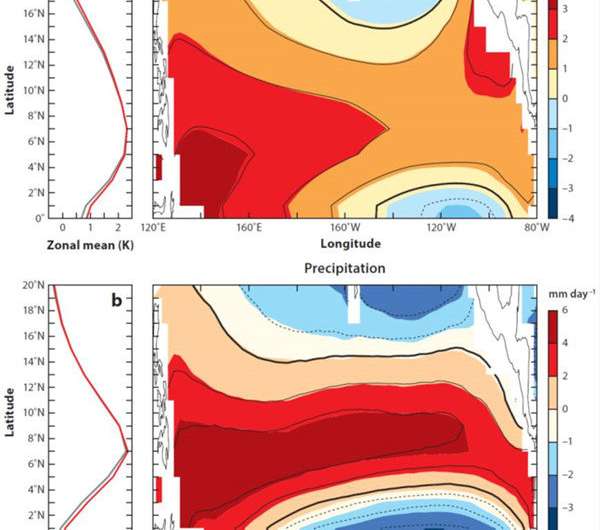Responses of the tropical atmospheric circulation to climate change

The tropical circulation change under global warming has been a growing subject of research in recent decades. It has a close relationship with the tropical precipitation change, and the uncertainty in making projections is one of the difficulties in climate science.
A special review by MA Jian, a professor at the college of marine sciences in Shanghai Ocean University, Prof. HUANG Gang from the Chinese Academy of Sciences and international collaborators have published an article in Annual Review of Earth and Planetary Sciences describing the climate change-induced responses of the tropical atmospheric circulation and their impacts on the hydrological cycle. It also depicts the theoretically predicted changes and diagnoses physical mechanisms for observational and model-projected trends in large-scale and regional climate.
For the large-scale circulation, the tropical circulation slows down with moisture and stratification changes, connecting to a poleward expansion of the Hadley cells and a shift of the intertropical convergence zone. Redistributions of regional precipitation consist of thermodynamic and dynamical components, including a strong offset between moisture increase and circulation weakening throughout the tropics. This allows other dynamical processes to dominate local circulation changes, such as a surface warming pattern effect over oceans and multiple mechanisms over land. To improve reliability in climate projections, the authors suggest that more fundamental understandings of pattern formation, circulation change, and the balance of various processes redistributing land rainfall are needed.
More information: Jian Ma et al, Responses of the Tropical Atmospheric Circulation to Climate Change and Connection to the Hydrological Cycle, Annual Review of Earth and Planetary Sciences (2018).
Provided by Chinese Academy of Sciences





















